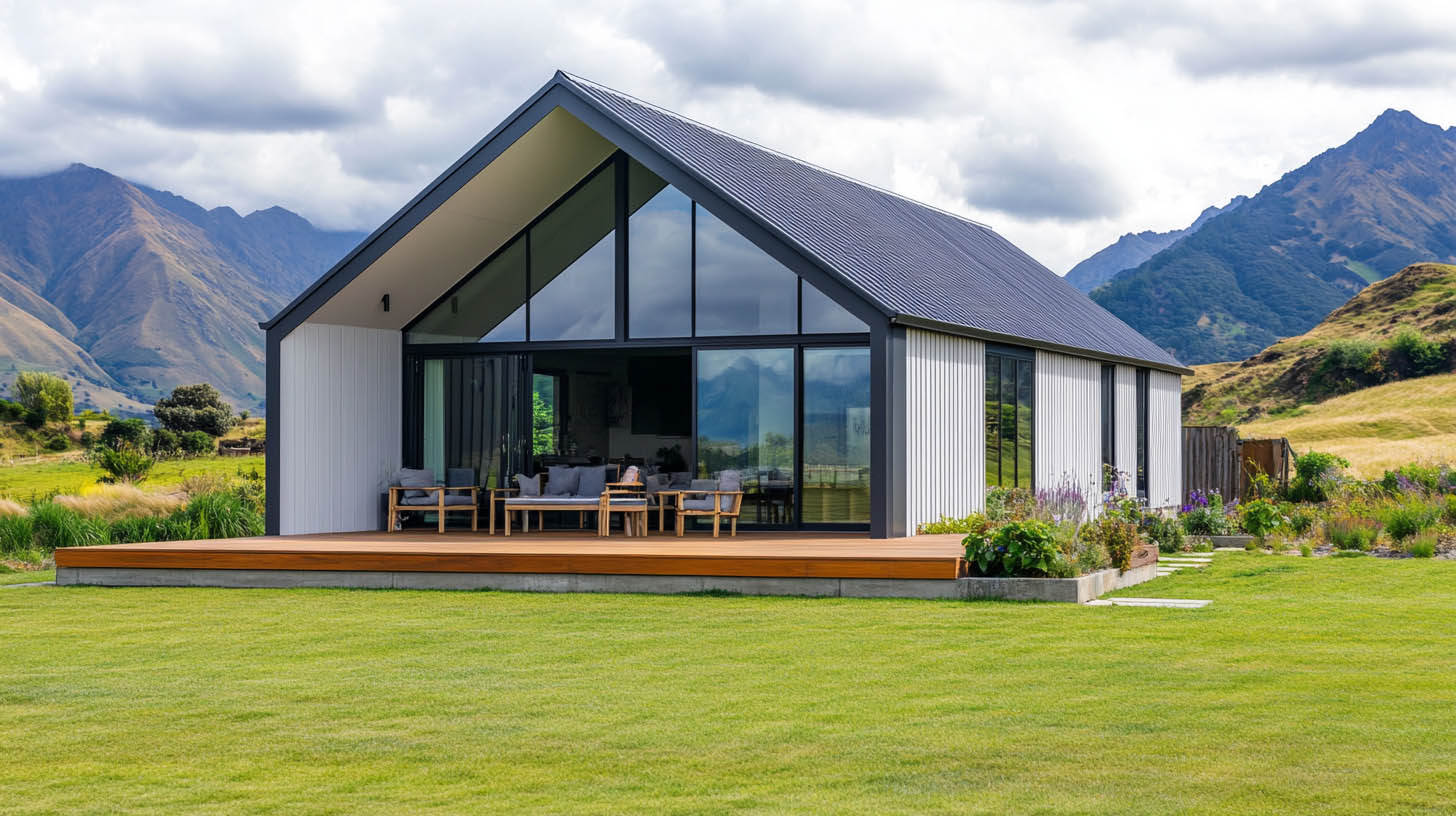
Gable roofs are among the most common roof designs in the U.S., characterized by their simplicity, functionality, and affordability. These roofs feature two sloping sides that meet at a ridge, forming a triangular shape on the building’s ends. For expert gable roof installations in Charleston, WV, trust Rainstoppers Roofing to deliver quality results.
Key Components of a Gable Roof
- Ridge: The highest point of the roof where the sloping sides meet.
- Eaves: The lower edges of the roof that extend beyond the walls.
- Gable: The triangular wall section between the two roof slopes.
- Rake: The roof’s overhang along the gable ends, providing weather protection.
Popular Gable Roof Styles
- Box Gable: Features triangular extensions at both ends of the roof.
- Front Gable: Places the gable at the house’s front, often over the main entrance.
- Cross Gable: Combines multiple gable rooflines intersecting at angles, ideal for homes with wings or large layouts.
- Side Gable: A straightforward design with two equal slopes meeting at the ridge.
- Dutch Gable: A combination of gable and hip roofs, providing additional loft space and a distinctive aesthetic.
Advantages of Gable Roofs
Ease of Construction: Gable roofs are simple to build, saving time and reducing labor costs.
Effective Drainage: The steep slope facilitates quick runoff, preventing water or snow accumulation.
Cost Efficiency: Materials for gable roofs are affordable and widely available.
Improved Ventilation: The design allows for better attic ventilation and can create extra living space.
Unique Fact:
The gable roof’s origins trace back to ancient Greek architecture, where it symbolized durability and aesthetic harmony.
Disadvantages of Gable Roofs
Wind Vulnerability: Large overhangs can act as sails in strong winds, risking uplift.
Potential Collapse: Improper construction or insufficient support can lead to structural failure.
Angle Precision: Steep angles must balance water runoff with overall stability.
Regular Maintenance: Damaged shingles, clogged gutters, or debris buildup require ongoing attention.
Where Are Gable Roofs Common?
Gable roofs are prevalent in cold and moderate climates, particularly in northern U.S. states like Montana, where asphalt shingles are often used for their durability and affordability.
FAQs
1. Are gable roofs more affordable than other types?
Yes, they are less expensive due to their simple design and lower labor costs.
2. Do gable roofs work in high-wind areas?
They can, but additional reinforcements and shorter overhangs are recommended.
3. What materials work best for gable roofs?
Asphalt shingles are cost-effective and durable, while metal and tile are excellent for longer-lasting options.
4. Can gable roofs provide attic space?
Yes, their design allows for ample attic or loft space.
5. How often should gable roofs be maintained?
Inspect for damage annually and after severe weather, cleaning gutters and repairing any issues promptly.
Conclusion
Gable roofs are a practical and versatile choice for homes across the U.S., combining affordability, efficient drainage, and aesthetic flexibility. To explore roofing options tailored to your needs, consult Rainstoppers Roofing. If you want to read a blog about how to measure your roof for shingles, click here.
